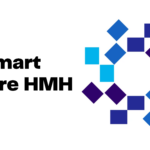Understanding the Importance of PET CT for Cancer

Cancer can be a rapidly spreading disease. Due to its metastasizing nature, appropriate and timely diagnosis becomes the key factor. PET-CT being a sophisticated diagnostic imaging technique contains the potential to diagnose early signs of cancer and metastasizing cancers as well. The PET-CT modality has evolved over the years that can help in evaluating the structure of cancer, and the spread of the cancer and aid in diagnosis and treatment planning accordingly.
PET-CT- a Hybrid Diagnostic Modality
A PET CT scan is an imaging technique of the nuclear medicine department that utilises a radioactive contrast dye to help appreciate the cancerous lesions working and location. While the CT (computed tomography) scan is a 3D diagnostic imaging technique that operates on an X-ray system. The Combined PET-CT technique combines the advantages of both PET scan and CT scan for accurate diagnosis of cancer.
PET-CT scan is effective in providing information about the growth and stage of the standing cancer and the spread of metastasizing cancer. Although it can not detect single cells spread from a microscopic view, it is quite capable of detecting clusters of cancerous cells that have metastasized to different organs and tissues.
Uses of PET-CT Scan
A PET-CT scan can be used to
- Help visualise and pinpoint the location of the growing cancer
- Know the stage of the cancer
- Show the spread of metastasizing cancer
- Make the appropriate treatment plan
- Show if cancer has recurred
Types of Cancer PET-CT can Detect
- Breast cancer
- Cervical cancer
- Colorectal cancer
- Esophageal cancer
- Head and neck cancer
- Lung cancer
- Lymphoma
- Melanoma
- Ovarian cancer
Comparing PET with MRI And CT
A positron emission tomography scan uses a radioactive dye to help evaluate the metabolic functioning of the body cells, it can detect metabolic changes in the cells. The special dye used in PET scan gets absorbed by the cells, more metabolically active cells, the more they take up the dye and the more they are represented in the PET images, thereby helping in the diagnosis of cancer as cancer cells are more active than the normal cells.
A CT scan uses X-ray imaging techniques that are bombarded on you which are reflected, and bounced back from our body cells, thereby producing scan images in shades of grey that help appreciate the cancerous mass in the body.
An MRI scan on the other hand uses strong magnets/magnetic fields and radio waves to produce images of the body structures and organs along with its abnormalities, thereby aiding in the diagnosis of cancer.
Out of all the above-explained modalities, only the PET scan is working on the principle of detecting the metabolic functioning of the body cells, which makes it the most sensitive exam in the detection of cancer.
What are the Possible Risks Of PET-CT Scan?
The PET-CT scan uses a contrast dye and radiations that may stand you to certain risks. The contrast dye that is used in the scan has the potential to cause allergic reactions in some patients that can be represented as redness, swelling, itching, nausea, vomiting, headache, and others. Since the test involves ionising radiation as a principle of CT scan working, pregnant ladies, and patients with chronic renal diseases and other diseases should avoid getting the scan unless recommended by their doctors. Breastfeeding or chestfeeding mothers should avoid the scan as the contrast used in the dye stays in the body for a few hours after the scan which will get out of the body completely eventually and can be hastened by drinking plenty of water after the scan.
Conclusion
The cancer has the potential to spread anywhere in the body in its later stages. Although the progression of the cancer is very slow and develops over years to reach a metastasizing stage. Once the cancer is detected in its early stages, it is possible to treat totally also and eliminate it from the system completely. But in most cases, cancer doesn’t present with any evident signs or symptoms. Therefore, preventive screening from the best diagnostic centre near you becomes of relevance.





































































hey there and thank you for your info – I have certainly picked up anything new from right here.
I did however expertise a few technical points using this site,
since I experienced to reload the website lots of times previous
to I could get it to load correctly. I had been wondering if your web host is
OK? Not that I’m complaining, but sluggish loading instances times will very frequently affect your placement in google and
could damage your high-quality score if advertising and marketing with Adwords.
Well I am adding this RSS to my e-mail and could look
out for much more of your respective intriguing content.
Ensure that you update this again soon..